Great Lakes fishing guide Chris LeMessurier has collected an impressive fleet of kayaks. “Too many, according to my wife,” he laughs. But one boat holds a special place in his heart. “I started out in a Wilderness Systems Pungo 120,” he remembers. In fact, he still has the spunky little sit-inside fishing kayak in the garage.
Today, LeMessurier is more likely to take his sit-on-top kayak. But he still admires the lightweight simplicity of the Pungo 120. “It was cheap, too,” he chuckles.
These are the same reasons many anglers choose a sit-inside for their first kayak. And manufacturers are offering better options to be competitive among the most popular fishing kayaks and introduce a new generation to the sport.

Get back into the sit-inside fishing kayak
At the demo day during last summer’s Paddlesports Retailer tradeshow, Luther Cifers, CEO of Bonafide Kayaks, grabbed my arm and whispered into my ear, “I got something to show you.” He dragged me around a corner and pointed to a bright red sit-inside kayak shaped like the Millennium Falcon. This was not your grandfather’s SIK.
Cifer’s prototype became the EX123, a sit-in kayak with the stability of a sit-on-top. He explains, “We wanted to build a boat that’s perfect for efficient, confident and comfortable paddling, great for overnight and multi-day trips, and of course, have advantages specific to fishing.”
They hit those notes with unique designs like a frame seat, rear hatch doubling as a tackle crate platform and HyCat hull from their sit-on-top boats. “Wrap it up in a lightweight grab-and-go platform putting the simplicity back into kayak fishing.”
Cifer’s reasoning has inspired a new generation of sit-inside kayaks with traditional performance and modern comfort and convenience. One of the first kids on the block was Old Town Canoe’s Loon 106 and 126.
The Sit-Inside Advantage
Lead designer Bob McDonough points to the advantages of a sit-inside. “The boats are lower to the water for better stability and use less plastic to cut weight.” Imagine cutting a man hole in the deck of your sit-on-top and removing the plastic.
The Sit-Inside Disadvantage
The disadvantage is less comfortable seating and limited deck rigging. Bonafide’s solution is a pimped-out frame seat found in their sit-on-top models.
Cifers knows comfort is one of the first priorities for anglers looking to fish all day. Sitting in the bottom of the kayak is great for stablility, but can make it difficult to enter the boat.
Old Town went the other way, developing their ACS2 seat for the Loon then installing it in their Trident sit-on-top boats. McDonough points out, “Adjustable leg and back support in a 3D molded seat is more comfortable than the flat frame seat.” The Loon also has a large cockpit opening for easy entry.
Fine-Tuning The Sit-Inside Design
To improve rigging options, modern sit-insides include a dashboard in the cockpit to keep rod holders, electronics and tackle within reach. Cifer’s design team turned the rear hatch into a platform molded to fit a full-size tackle crate.
The biggest advancement is in performance. Recreational sit-inside kayaks under 12 feet long can be squirrely, but new designs favor stability. Cifers says, “Our focus was on a standable sit-inside.” Their catamaran-style hull improves tracking and stability without cutting speed. Both Old Town’s Loon and Jackson Kayak’s sit-inside Kilroy are designed for standup fishing.
Pouring new energy in the traditional sit-inside design is bringing a new generation of anglers to the sport while offering old salts a familiar platform with modern features. Cifers explains, “The EX123 fits nicely beside a $7,000 fishing rig,” offering serious anglers a second boat for quick trips or hosting guests.
At Old Town, McDonough adds the Loon is finding friends with traditional paddlers. When I asked if traditional meant older he got quiet, then pointed out the boats are easier to cartop and carry to the launch.
A standing ovation for new sit-insides
With more comfortable seats, better performance and modern rigging in a user-friendly package, the latest generation of sit-inside fishing kayak may be your grandfather’s next boat.
This article was first published in the Spring 2019 issue of Kayak Angler Magazine. Subscribe to Kayak Angler Magazine’s print and digital editions, or browse the archives.
Back to basics. | Feature Photo: Courtesy Wilderness Systems


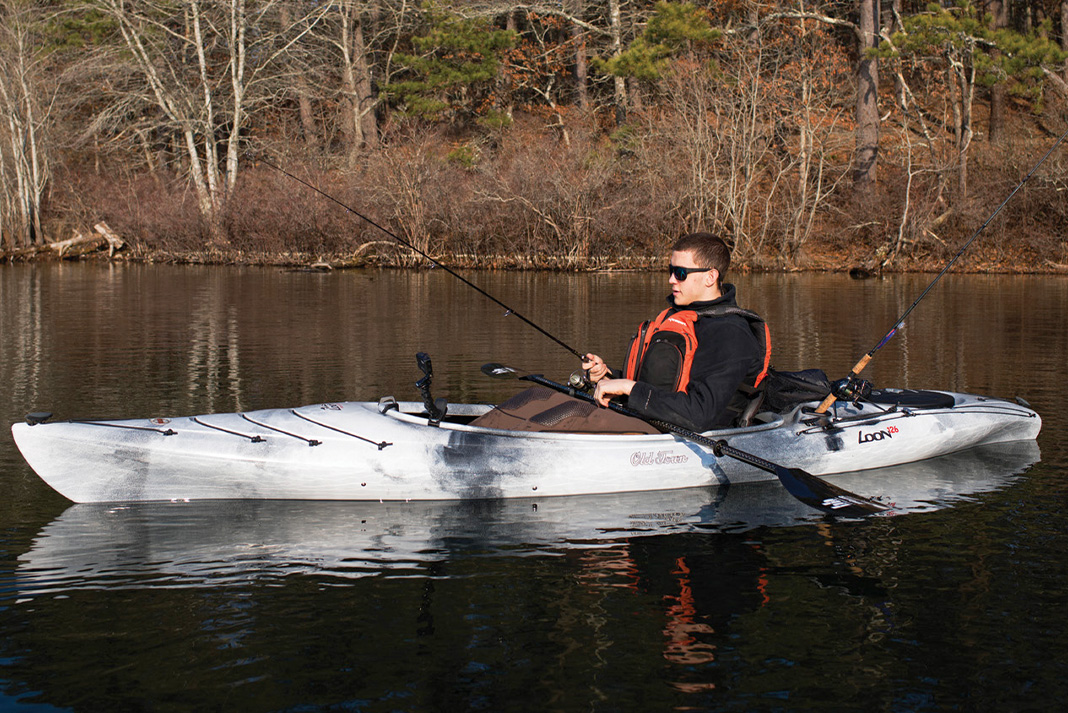
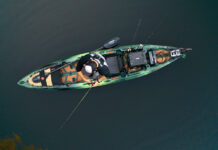
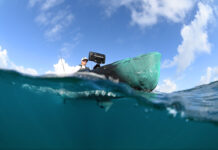
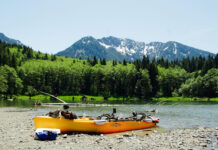
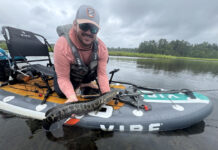
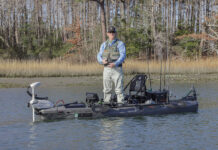

While I can’t state for certain, your acknowledged bold statement implies that the new improved sit in kayaks are for everyone. This past year, for the first time in my life, I became an active and accomplished member of the Poseidon club. This was something I was able to avoid for the first 58 years of my life, but it finally caught up in my 59th year. While out fishing with my girlfriend we managed, quite easily to flip over. I’m not convinced at 59 for me and 6? For her (trying to be politically correct;), that our egress out of a SIK would have been as easy. The older I become the slower my reactions are and it becomes much more difficult to get out of tight or restraining areas. But to be fair I have not yet tried them, however I am Leary.
The Native Watercraft Ultimate kayaks solve all those problems. The hull design is very stable and flipping one is nearly impossible. The hull is open and can be rigged with just about anything you might want to have on it. It also does great with a trolling motor. They’re awesome boats, and I’ve used nothing else since they hit the market and I took my first ride. If you want more info you can reach me at barhoppr@live.com .
Capt Butch Rickey
I love my Old Town Loon 126 rigged for fishing. It is light, stable , tracks well and is fast. The seat is very comfortable and the removable work deck is handy, I mounted my fish finder on the track of the work deck.
I like most the Wilderness Systems Pungo 120 that is a sit-inside recreational kayak. I know so far this is the highest-rated and best selling kayak. It’s length 12’2″ and width 29″ are really perfect for all. It’s weight: 22kg and capacity: 147 kg that are acceptable to most of us. How is it’s maneuverability, please inform me?
Keep up the good posting, Ric Burnley.
Thanks
I have a 1994 Dagger Zydeco that I rigged out with 2 rod holders that year. Basically the (then) wife said to me, we don’t have time to bring the boat and we don’t need to spend the extra money on gas and storage while on vacation. This boat was a compromise between the two at $449 (in 1994 money) and I’ve never looked back. It is still one of my favorite boats to fish from and paddle. I have done class 3 and short class 4 rapids with a skirt and learned to recover and roll it (with a skirt). I’ve toured (albiet it is short and a workout), paddled and done flats fishing from it as well. Simple and effective. I will say I now have a Hobie i11s, a Boardworks BadFisher SUP, a Jackson SUPerFishal (which I NEVER use) and a new Bote Lono in my arsenal (all inflatable; I like the space savings of them). But the simplicity of the Dagger trumps it all. In today’s times, the Bote Lono and Hobie boards would be what I would purchase for what I like to do. The Hobie is a great flat water boat and the Lono will do anything.
Ok, so the Jackson SUPerfishal isn’t inflatable which is why it sits at home.
Welcome to the world of actual kayaks! It’s a cyclic consumer marketing trend…sleek, touring “blue water” boats to shorter, safer recreational boats to sit-on-top wanna be kayaks to “fishing” non-kayaks, and now back again. The reason the market changed/expanded was that kayak designers started marketing their boats as great for “fishing” or “photography” or “wildlife viewing” because each activity suggested a stable, safe watercraft. The fishing kayak emerged from the sit-on-top play boats as a utility tool for anglers -who were fishermen/womn and NOT kayakers. They still are not really kayakers, but some are beginning to discover the differences between and open platform and a closed deck/cockpited boat suitable for ocean use. After all, they’ve been around for thousands of years and natives hunted whales from them. As a side note, an “uncomfortable” seat is most often due to an unskilled paddler. Whatever paddle craft you evolve into – Be safe, have fun!
Welcome to the world of actual kayaks! It’s a cyclic consumer marketing trend…sleek, touring “blue water” boats to shorter, safer recreational boats to sit-on-top wanna be kayaks to “fishing” non-kayaks, and now back again. The reason the market changed/expanded was that kayak designers started marketing their boats as great for “fishing” or “photography” or “wildlife viewing” because each activity suggested a stable, safe watercraft. The fishing kayak emerged from the sit-on-top play boats as a utility tool for anglers -who were fishermen/women and NOT kayakers. They still are not really skilled at “kayaking”, but some are beginning to discover the differences between an open platform and a closed deck/cockpit boat suitable for ocean use. After all, they’ve been around for thousands of years and natives hunted whales from them. As a side note, an “uncomfortable” seat is most often due to an unskilled paddler’s paddling form. Whatever paddle craft you evolve into – Be safe, have fun!
My wife and I bought Old Town a Loon 100 and a 138 in 1998. Sold my Loon 138 in 2018 and bought a Loon 126. The new ASC2 seat is very comfortable and the 126 is much faster. Very happy with it. Had the Loon 138 20 years I am 68 now and hope to still be paddling the 126 20 years from now when when I am 88.
I’m a big fan of these new fishing sit-insides. You’re standing below the water level so it’s pretty stable, plus you’re overall closer to the water, which is what kayak fishing is all about. I love that the EX123 has a stern bulkhead, definitely a great feature in case you capsize. Not all boats have this level of safety.
An older thread to say the least. I own a kayak to fish. It is a cheaper alternative to owning a power boat and I can get to places that power boats can not. I don’t pretend to be a kayaker in the sense that is an awesome sport in its own right with many enthusiasts who enjoy paddling whether in slow water or class V rapids and everything in-between. If I was still in my younger years I might well be part of that crowd. I started fishing from a sit-in Perception 13 foot kayak. I had a lot of fun and it got back me back to fishing and it was pretty cool. But ever land or attempt to land a 20 inch northern pike in a sit-in kayak 4 inches above the water. Not much fun. The issue with sit-in yaks for fishing is you are too close to the water. Even with awesome polarizes sunglasses you can’t see below the water. A sit-on top fishing kayak with a high mounted seat or one you can actually stand in is a game changer. Not that at my age would even consider standing on sit-on top much less a sit-inside. No it is not quick and isn’t going to win a speed contests but it does what is designed to do and does it well and it is super stable, The pedal driven ones are even better.